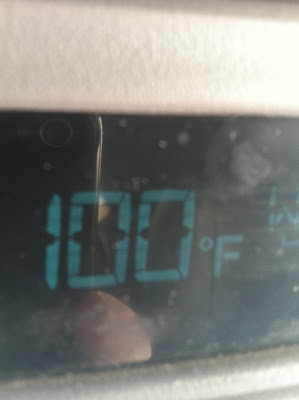![]() |
| Jefferson River Valley from the trail to the cavern entrance |
I'm being bad and throwing out more wanderings instead of being more creative, but it was such a fun wandering this weekend that I can't resist!
The adventures this weekend took me and my friends Laney, Lisa and Chase to Lewis and Clark Caverns State Park, near Three Forks, MT. In the many years, off and on, that I have lived in this area, it is one of those places that I say "Oh, I really want to go there sometime" every time I drive by the exit sign for it on I-90, but then promptly forget it exists until the next time I drive by the sign. Well, not anymore!
While located near an area passed through by Lewis and Clark, they did not actually discover the caverns, or have any idea they were there...Montana just really loves naming things after them. They were actually discovered by two hunters in the late 1800s who noticed a bare area on the hillside during a February hunt. Upon further exploration(aka, dropping rocks in the hole and not hearing them hit bottom) they decided to come back later when it might be a little safer than mid-February in Montana. It took 6 years, but one of them did return and begin to explore in 1898. Sometime later, a successful prospector took over and began offering tours, utilizing a man-made entrance since the original discovery hole was more overhead to the cavern and descended into a rather large pit within the cavern. To give his tours, he created a walkway throughout with 2000 wooden steps and a 90 foot spiral staircase that often swayed as much as 2 feet from side to side.
![]() |
| Lisa, me and Laney at the cavern entrance |
Eventually the railroad discovered that they actually owned the rights to the land and claimed it, only to turn it over to the federal government in 1908. It was designated a National Monument and then locked up so people could not get in. The prospector, Dan Morrison, deciding that he didn't want to play by those rules, cut the lock, replaced it with his own, and continued his tours. Morrison and the federal government play this back and forth game until Morrison's death in 1932.
Around that point, the newly formed(1929) Montana State Parks system came into play, as they were then 3 years old but still did not have any park sites. With the help of the Civilian Conservation Corp, the rickety spiral staircase and wooden steps(wood in a moist cave does not exactly equal a good pairing) were removed and replaced by asphalt, some areas widened for better access, such as the entrance, and a new section of the cavern was discovered and opened to the public. After the discovery of this new section, an exit tunnel was also created so that visitors no longer had to retrace their steps back to the top of the cavern to get out.
![]() |
| Stalactites on the cavern wall |
There are several areas to the cave, both large and small, and you actually spiral down throughout the cavern as you decend with each of the large rooms 100-200 feet below each other. They have intriguing names such as the Cathedral room(named for it's shape), the Sample room(named because of the large quantities of "samples" that Dan Morrison encouraged his guests to break off and take home with them to show their friends) and the Poison room(named for the eerie, venomous colors).
![]() |
| Crystal Pool(it's back there, I promise!) |
![]() |
One mile above sea level
|
Another neat concept we learned about was the way the cave can change your perception. In the Poison room, our guide pointed out a tall, narrow feature that appeared to be about 20-25 feet away and maybe 2 feet tall, which was actually 62 feet away from us and 6 feet tall....I am still baffled that the little white "stick" she pointed out was actually almost a full foot taller than me! The other was the idea, so kindly labeled for us on the stairs, of being at the one mile above sea level point while underground. That's a fun way to mess with one's mind a little bit!
![]() |
One of the great illusionary examples
|
![]() |
| Poison Room - 6 foot tall feature is the small white line in the upper left |










